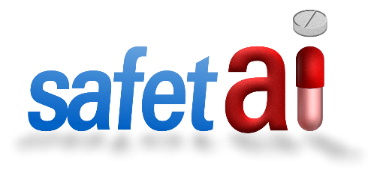SafetAI Initiative
To develop AI models for toxicological endpoints that inform the safety review of drug candidates before entering clinical trials.

Objective: To develop AI models for toxicological endpoints to assess drug safety.
Introduction: During the Investigational New Drug (IND) application submission process, FDA specifically reviews the safety of a submitted drug candidate before the sponsor can initiate any clinical trials. SafetAI is a collaborative initiative between CDER and NCTR to develop a suite of deep learning-based QSAR models with innovative approaches for various safety endpoints critical to regulatory science and the IND review. Currently, the initiative focuses on five key safety endpoints: hepatotoxicity, carcinogenicity, mutagenicity, nephrotoxicity, and cardiotoxicity.
Approaches: We are developing a novel deep learning framework which is designed to optimize toxicity prediction for individual chemicals based on their chemical characteristics. The method was compared to several conventional machine learning and state-of-the-art deep learning methods for predicting drug-induced liver injury (e.g., DeepDILI), carcinogenicity (e.g., DeepCarc), and Ames mutagenicity (e.g., DeepAmes). The preliminary results from this method yielded significant improvement in these toxicity endpoints in comparison to other deep learning and QSAR methods.
Potential Impact: SafetAI facilitates drug safety research with a novel deep learning architecture that improves the “precision” in toxicity assessment by tailoring prediction to chemical characteristics. It could play a role in providing critical safety information during the IND review process.
References
| Year | Title | Authors | Full Citation |
|---|---|---|---|
| 2024 | Generation of a Drug-Induced Renal Injury List to Facilitate the Development of New Approach Methodologies for Nephrotoxicity. | Connor S., Li T., Qu Y., Roberts R.A., and Tong W. | Generation of a Drug-Induced Renal Injury List to Facilitate the Development of New Approach Methodologies for Nephrotoxicity. Connor S., Li T., Qu Y., Roberts R.A., and Tong W. Drug Discovery Today. 2024, 29(4):103938. doi: 10.1016/j.drudis.2024.103938. Online ahead of print. |
| 2023 | DeepAmes: A Deep Learning-Powered Ames Test Predictive Model with Potential for Regulatory Application. | Li T., Liu Z., Thakkar S., Roberts R., and Tong W. | DeepAmes: A Deep Learning-Powered Ames Test Predictive Model with Potential for Regulatory Application. Li T., Liu Z., Thakkar S., Roberts R., and Tong W. Regulatory Toxicology and Pharmacology. 2023, 144:105486. |
| 2023 | DICTrank: The Largest Reference List of 1318 Human Drugs Ranked by Risk of Drug-Induced Cardiotoxicity using FDA Labeling. | Qu Y., Li T., Liu Z., Li D., and Tong W. | DICTrank: The Largest Reference List of 1318 Human Drugs Ranked by Risk of Drug-Induced Cardiotoxicity using FDA Labeling. Qu Y., Li T., Liu Z., Li D., and Tong W. Drug Discovery Today. 2023, 28(11):103770. doi: 10.1016/j.drudis.2023.103770. Epub 2023 Sep 13. |
| 2021 | DeepCarc: Deep Learning-Powered Carcinogenicity Prediction Using Model-Level Representation. | Li T., Tong W., Roberts R., et al. | DeepCarc: Deep Learning-Powered Carcinogenicity Prediction Using Model-Level Representation. Li T., Tong W., Roberts R., et al. Frontiers in Artificial Intelligence. 2021, 4. |
| 2021 | DeepDILI: Deep Learning-Powered Drug-Induced Liver Injury Prediction Using Model-Level Representation. | Li T., Tong W., Roberts R., et al. |
DeepDILI: Deep Learning-Powered Drug-Induced Liver Injury Prediction Using Model-Level Representation. |
| 2020 | Deep Learning on High-Throughput Transcriptomics to Predict Drug-Induced Liver Injury. | Li T., Tong W., Roberts R., et al. | Deep Learning on High-Throughput Transcriptomics to Predict Drug-Induced Liver Injury. Li T., Tong W., Roberts R., et al. Frontiers in Bioengineering and Biotechnology. 2020, 8. |
